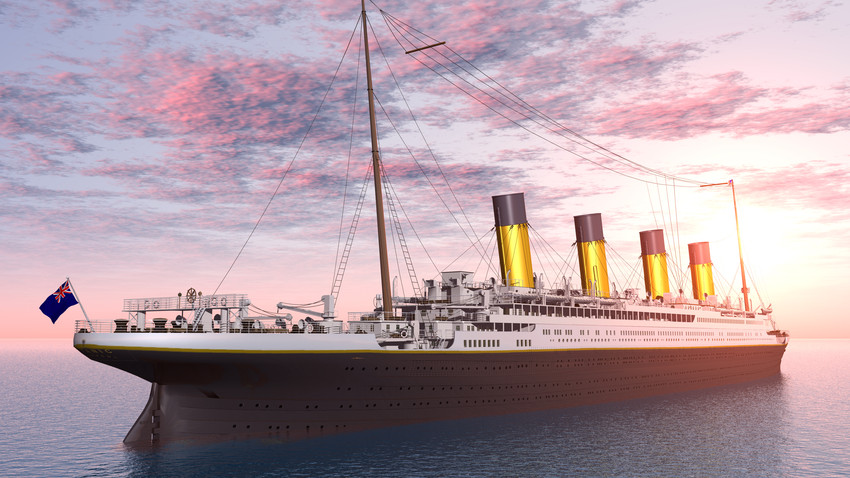
105 Years Ago Today
Nineteen year old Helen and her honeymooning groom, Dickinson Bishop, were as star struck as newly-weds could be. The two young adults from Dowagiac, Michigan, were setting sail on what at the time was the largest moving object on earth—the RMS Titanic. Boarding the maiden voyage of the four-stack luxury liner on the evening of April 12, 1912, in Cherbourg, France, the couple set sail for New York City embedded in the luxury of first-class cabin B-49.
Two nights later Helen was already in bed and her husband reading in their cabin stateroom, when a knock at their door summoned them to the deck above. Neither had felt or heard the Titanic strike a floating iceberg. But when they ascended to the upper deck, officials there announced there was no danger and they might as well return to their cabin. As they prepared again for bed, a friend knocked, concerned that the ship was listing to its side, and so the Bishops dressed once more and hurried top side, where only a few passengers had gathered. Moments later crew instructed them to don their lifejackets, and the Bishops were ordered into the first lifeboat (No. 7).
In fact Helen was the first Titanic passenger to board one of those vessels, dangling from its perch 75 feet above the dark and frigid Atlantic. Afraid of its precarious height, many passengers were reluctant to climb on board any of the lifeboats. Thus at 12:45 AM, when lifeboat No. 7 was lowered to the night sea with 28 passengers, it was less than half full. Only three crew were aboard, which meant the passengers took turns hurriedly rowing the vessel into the night away from the massive sinking hulk.
At 2:20 AM, April 15, the unsinkable Titanic silently lurched forward, then nosedived into the sea, its twinkling lights simultaneously extinguished as the Atlantic swallowed the iron ship, carrying 1503 passengers and crew to their death. There were lifejackets available for all 2,208 passengers. But only 705 survived.
Rescued by the Carpathia, the Bishops returned to New York City, and eventually to Dowagiac. Both testified at a Senate investigation, headed coincidentally by Dowagiac-born Michigan Senator William A. Smith.
But tragedy continued to track Helen and Dickinson. Their infant child born that December died after two days. And on November 15, 1913, “the couple was returning to Dowagiac from Kalamazoo, Michigan, in their motor car when it went out of control and struck a tree. Helen suffered a severely fractured skull and was not expected to live. She recovered with a steel plate placed in her skull, but the accident caused a change in her mental condition and their marriage suffered. In January 1916, the couple divorced. Three months later Helen fell while visiting friends in Danville, Illinois. On March 16, 1916, she died and was buried in Sturgis, Michigan” (www.encyclopedia-titanica.org/titanic-survivor/helen-bishop.html). She was twenty-three years old.
One hundred-five years later the sinking of the Titanic remains a story of enduring sorrow. Such boasted promise, such hope misplaced, such tragic endings for both rich and poor.
And yet the story of an empty Palestine sepulcher two millennia ago offers to exchange our enduring sorrow with Hope’s singular promise: “Never again will death have the last word” for “because I live, you shall live also” (Romans 6:9 The Message; John 14:19).
No matter how titanic the tragedy, the sorrow, the death that stalks us. Today we seek Him. Who still promises. Resurrection hope.
Soar we then where Christ has led—Alleluia!
Following our exalted Head—Alleluia!
Made like Him, like Him we rise—Alleluia!
Ours the cross, the grave, the skies—Alleluia!
—Charles Wesley